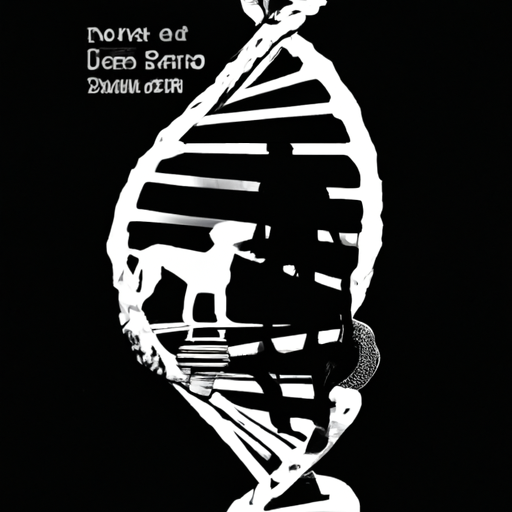If you’ve ever looked into your dog’s eyes and felt a deep connection, you might not be surprised to learn that humans and dogs share a significant portion of their DNA. Let’s delve into this fascinating subject and uncover the science behind our shared genetic code.
Understanding DNA
Before we dive into the specifics of human and dog DNA, let’s first understand what DNA is.
DNA, or deoxyribonucleic acid, is the molecule that carries the genetic instructions for the development, functioning, growth, and reproduction of all known living organisms and many viruses. Here’s a brief breakdown:
- Structure of DNA: It’s typically composed of two strands coiled around each other in a double helix, each strand made up of four nucleotide bases – adenine, thymine, cytosine, and guanine.
- Role of DNA: It plays a crucial role in determining the physical characteristics of an organism, ranging from eye color to height, and can even influence certain behaviors.
Human and Dog DNA: The Shared Connection
Scientists have discovered that humans share more than just emotional bonds with their canine companions. We are genetically similar too. But how much exactly do we share?
According to a study conducted by the Broad Institute in Massachusetts, humans and dogs share about 84% of their DNA. This discovery was made possible through the process of genome sequencing, which involves mapping out the entire genetic code of an organism.
Here’s a simple table to illustrate the percentage of shared DNA between humans and a few other animals for comparison:
| Animal | % of DNA Shared with Humans |
|---|---|
| Chimpanzees | 98.7% |
| Cats | 90% |
| Dogs | 84% |
| Cows | 80% |
| Mice | 85% |
Why Do Humans Share So Much DNA with Dogs?
You might be wondering why humans and dogs share such a substantial amount of DNA. The reason lies in our shared evolutionary history.
Approximately 100 million years ago, humans and dogs shared a common mammalian ancestor. As time passed, evolutionary forces like natural selection and genetic drift led to the emergence of distinct species. However, the basic blueprint – the DNA – remained largely the same, resulting in the shared genetic material we observe today.
Implications of Shared DNA
The similarity in DNA between humans and dogs has profound implications, particularly in the field of medical research.
Because dogs suffer from many of the same diseases as humans – including diabetes, cancer, and heart disease – and their bodies react similarly to treatments, they can serve as excellent models for human disease. This shared DNA has paved the way for numerous advancements in medical research, benefitting both humans and dogs alike.
FAQ
Q: What percentage of DNA do humans share with dogs?
A: Humans share about 84% of their DNA with dogs.
Q: Why do humans and dogs share so much DNA?
A: This is due to our shared evolutionary history. Humans and dogs had a common mammalian ancestor about 100 million years ago.
Q: What implications does the shared DNA have?
A: The shared DNA between humans and dogs has significant implications in medical research. Dogs can serve as excellent models for studying human diseases.
Q: Are dogs the animal we share most of our DNA with?
A: No, humans share the most DNA with chimpanzees. We share about 98.7% of our DNA with them. However, dogs are one of the animals with whom we share a significant amount of DNA.
Q: Does shared DNA mean humans and dogs have similar characteristics?
A: While shared DNA does contribute to some similarities, it doesn’t mean humans and dogs have identical characteristics. The expression of genes and environmental factors also play a significant role in determining characteristics.
In conclusion, the connection between humans and dogs is deeply rooted in our DNA. This shared genetic heritage has not only fostered an unbreakable bond between our species but also opened up new avenues in scientific research and medical advancements. As we continue to unravel the mysteries of our DNA, who knows what other fascinating discoveries await us?



